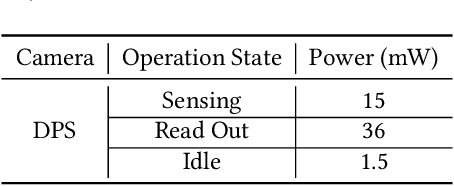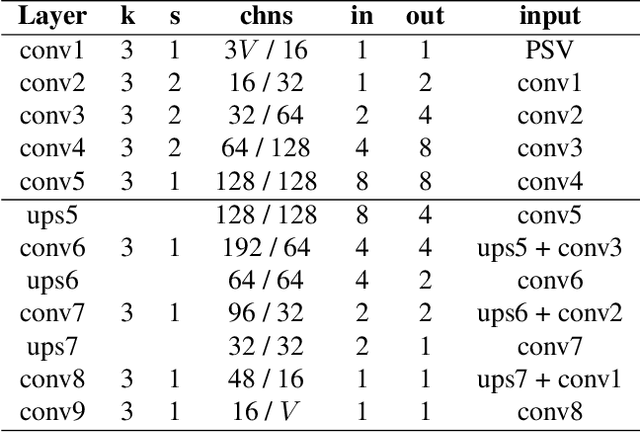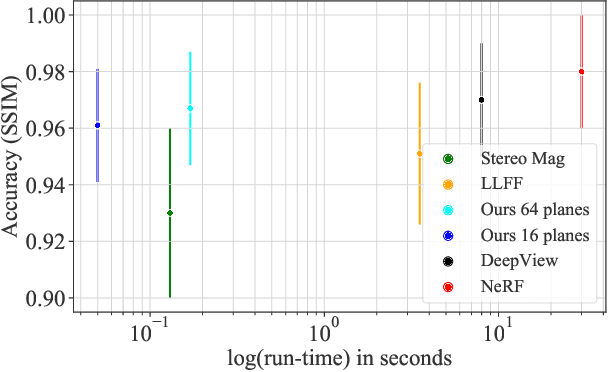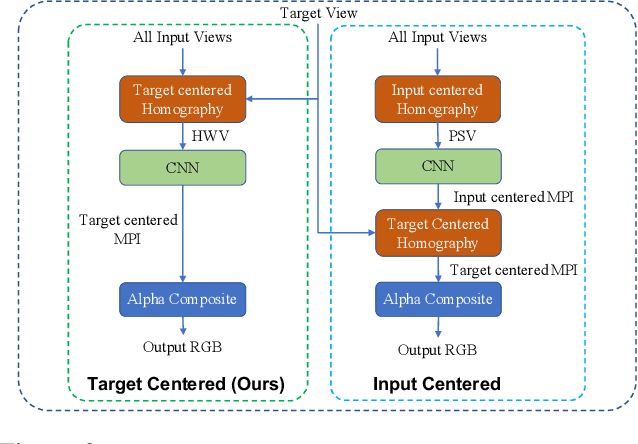Andrew Berkovich
SteROI-D: System Design and Mapping for Stereo Depth Inference on Regions of Interest
Feb 13, 2025



Abstract:Machine learning algorithms have enabled high quality stereo depth estimation to run on Augmented and Virtual Reality (AR/VR) devices. However, high energy consumption across the full image processing stack prevents stereo depth algorithms from running effectively on battery-limited devices. This paper introduces SteROI-D, a full stereo depth system paired with a mapping methodology. SteROI-D exploits Region-of-Interest (ROI) and temporal sparsity at the system level to save energy. SteROI-D's flexible and heterogeneous compute fabric supports diverse ROIs. Importantly, we introduce a systematic mapping methodology to effectively handle dynamic ROIs, thereby maximizing energy savings. Using these techniques, our 28nm prototype SteROI-D design achieves up to 4.35x reduction in total system energy compared to a baseline ASIC.
Distributed On-Sensor Compute System for AR/VR Devices: A Semi-Analytical Simulation Framework for Power Estimation
Mar 14, 2022



Abstract:Augmented Reality/Virtual Reality (AR/VR) glasses are widely foreseen as the next generation computing platform. AR/VR glasses are a complex "system of systems" which must satisfy stringent form factor, computing-, power- and thermal- requirements. In this paper, we will show that a novel distributed on-sensor compute architecture, coupled with new semiconductor technologies (such as dense 3D-IC interconnects and Spin-Transfer Torque Magneto Random Access Memory, STT-MRAM) and, most importantly, a full hardware-software co-optimization are the solutions to achieve attractive and socially acceptable AR/VR glasses. To this end, we developed a semi-analytical simulation framework to estimate the power consumption of novel AR/VR distributed on-sensor computing architectures. The model allows the optimization of the main technological features of the system modules, as well as the computer-vision algorithm partition strategy across the distributed compute architecture. We show that, in the case of the compute-intensive machine learning based Hand Tracking algorithm, the distributed on-sensor compute architecture can reduce the system power consumption compared to a centralized system, with the additional benefits in terms of latency and privacy.
LiveView: Dynamic Target-Centered MPI for View Synthesis
Jul 11, 2021



Abstract:Existing Multi-Plane Image (MPI) based view-synthesis methods generate an MPI aligned with the input view using a fixed number of planes in one forward pass. These methods produce fast, high-quality rendering of novel views, but rely on slow and computationally expensive MPI generation methods unsuitable for real-time applications. In addition, most MPI techniques use fixed depth/disparity planes which cannot be modified once the training is complete, hence offering very little flexibility at run-time. We propose LiveView - a novel MPI generation and rendering technique that produces high-quality view synthesis in real-time. Our method can also offer the flexibility to select scene-dependent MPI planes (number of planes and spacing between them) at run-time. LiveView first warps input images to target view (target-centered) and then learns to generate a target view centered MPI, one depth plane at a time (dynamically). The method generates high-quality renderings, while also enabling fast MPI generation and novel view synthesis. As a result, LiveView enables real-time view synthesis applications where an MPI needs to be updated frequently based on a video stream of input views. We demonstrate that LiveView improves the quality of view synthesis while being 70 times faster at run-time compared to state-of-the-art MPI-based methods.
 Add to Chrome
Add to Chrome Add to Firefox
Add to Firefox Add to Edge
Add to Edge